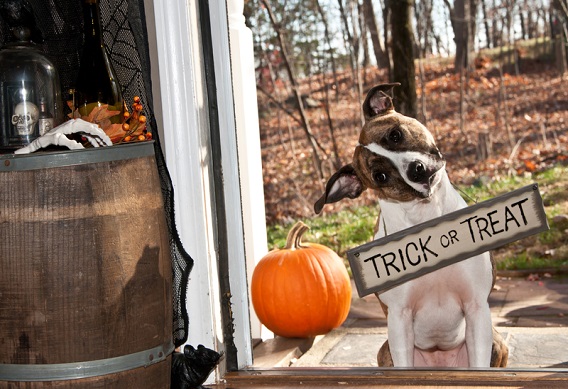4 Tips for Avoiding Scaredy Cats and Fearful Fidos this Halloween
Pet Sitters International offers pet owners important advice to ensure pets stay safe, healthy and happy during Halloween festivities.

With the end of October fast approaching, Halloween preparations are in full swing. According to the National Retail Federation®, more than 157 million Americans plan to celebrate the holiday this year and surveys indicate one-third of Canadians also plan to host or attend a Halloween party.
For pet owners busy planning or planning to attend “spooktacular” events, Pet Sitters International (PSI) recommends these special precautions be taken to ensure Halloween doesn’t become a scary event for your four-legged family members:
1. Avoid “pet”rified pets by keeping them away from trick-or-treaters. For shy or timid pets (or those not used to being around a lot of people, especially children), Halloween can be a particularly stressful time.
“Imagine a pet who thinks children are scary, then put those kids in costumes and to the pet, they truly become monsters!” explains Teoti Anderson, a professional dog trainer based in Lexington, SC, and author of multiple books on dog training. “If your pet is shy, timid or wary around people, make sure he or she is kept away from trick-or-treaters. You can put your pet in another room with some soothing music and toys until the event is over.”
PSI also recommends that outside pets be brought inside on Halloween night to avoid becoming victims of malicious tricksters who might try to frighten or harm animals. A neighborhood that is normally quiet, but becomes busy and loud on Halloween night, can also cause undue stress to outside pets.
2. Don’t let sweet treats become your pet’s nightmare. Halloween treats are another danger for pets. While most pet owners are aware that chocolate and other candies can be deadly if ingested by pets, younger trick-or-treaters or non-pet-owning guests may not know. Halloween party guests and other visitors should be reminded not to share chocolate with the dog, no matter how much he or she begs. Keep some pet-friendly treats on hand instead.
As the popularity of this holiday continues to increase, so do the many Halloween and fall-themed decorating ideas. Pet owners should take special care to keep pets away from Jack-o-Lanterns with real candles inside and other Halloween décor that could cause harm if chewed on or ingested.
3. Plan ahead so dressing up isn’t a scary occasion. There’s no question that pet costumes have become an increasingly popular item at Halloween–and the National Retail Federation reports that a pumpkin and a hot dog are the top two pet Halloween costume choices this year. While dressing your pet up is definitely a good photo opportunity, PSI reminds pet owners that some pets do not like costumes. If your pet does like dressing up, safety and comfort are the first things to consider when choosing your pet’s Halloween costume. If the costume constricts movement, blocks vision or has multiple parts that could easily be chewed off, then it is not a good choice.
If you decide to put your pet in a costume, planning ahead is very important advises Anderson.
“Once you make sure a costume will fit comfortably, introduce it to your pet gradually—at least a week before you want him to wear it. Use lots of treats to associate it as something fun,” Anderson explains. “For example, if you have a costume that wraps around a pet and is fastened underneath his belly, first lay the costume across his back. Give him some treats and remove the costume. Repeat a few times until the pet is comfortable. Then put the costume on, fasten it, give him some treats and remove the costume. Do this in short stages so he can get used to it. Keep your sessions short. If you take this time to get your pet used to wearing his costume, he'll enjoy it much better and be less likely to find it frightening.”
4. Don’t be tricked by pseudo-pet sitters. If your Halloween plans should keep you away from home, your pets could benefit from the services of a pet sitter. PSI advises pet owners to only use the services of professional pet sitters.
“Often times pet owners, and even news outlets, use the term ‘pet sitter’ carelessly, referring to anyone—from a family friend to the neighborhood teenager asked to walk a dog—as a ‘pet sitter,’” explains PSI President Patti J. Moran. “It is important that pet owners understand that pet sitting is a professional career and professional pet sitters offer peace of mind that other pet-care options cannot.”
Pet owners can download a free Pet-Sitter Interview Checklist and search PSI’s Pet Sitter Locator free of charge at petsit.com/locate to help them follow PSI’s advice to “Get A Real Pet Sitter®.”
“Allowing someone into your home who is not insured, bonded or trained in pet care and giving them access to your pets—now that’s a truly scary thought!” adds Moran.
PSI is the world’s largest educational association for professional pet sitters. To learn more about PSI or to find a professional pet sitter who services your area, visit www.petsit.com.






